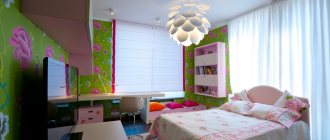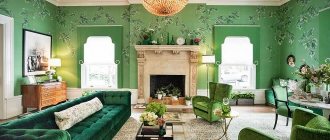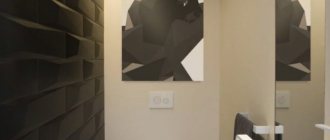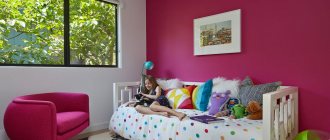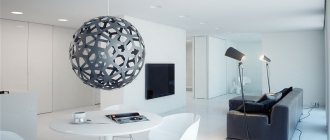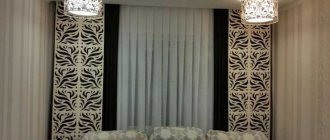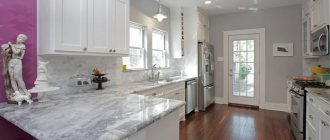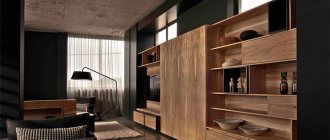Home » Rooms » Children's room
AccessoriesChildren's RoomDesignInterior in minimalist styleFurnitureWallpaperWall decorationInterior items
Alyona
A children's room in white colors is one of the most traditional and at the same time reasonable solutions. White color creates a feeling of purity and freshness, looks good in minimalism and Scandinavian style, and its most important advantage is that it is neutral. It is enough to change the furniture, hang posters instead of pictures, and the baby’s room will turn into a teenager’s room. It is enough to change the furniture again, hang pictures instead of posters and put in a carpet, and now, this is a young man’s room. The versatility of white makes it a good choice. Find out in more detail about all the nuances of finishing for any age below.
Features of white color and choosing the appropriate shade
White color is the color of peace and tranquility for anxious children
White color has several characteristic features that distinguish it from other colors:
- Neutrality . It combines with all colors in general, and they also determine exactly how the interior will look. Mix it with pastel colors - peach, lemon, soft green - and get a calm, harmonious room that is conducive to relaxing. Add bright shades to it - red, orange, canary, rich blue - and get the impression of drive, beauty that awakens and puts you in a cheerful mood.
- Reflective properties . It reflects and refracts light so that the room seems brighter and larger. This is especially useful in small apartments, where only a small area could be allocated for a nursery.
- Lightness . It balances out other colors. When combined with it, even the most flashy or gloomy shades begin to look more peaceful. Its combination with black will give severity, not gloominess. Its combination with scarlet will give drive, not nervousness.
With this color the room seems larger and brighter
Overall this is a very nice color and easy to work with. The first step in this work is to choose a shade of white that suits a specific room:
- If there is little light in the room, its windows face north and there is almost no sun in it, the shade should be warm, otherwise it will seem cold and uncomfortable.
- If there is a lot of light in the room, its windows face south and there is a lot of sun in it, you can use cold shades, it will still not be cold.
Decorating a white children's room is not only easy, but also very interesting.
Warm shades always give a feeling of coziness. Cold ones are strict, and if you overdo it, you can get associations with an operating room or a hospital, which are completely inappropriate in a nursery.
Advice It is better to add cool colors to a cold shade of white, and vice versa.
Goes well with any color
To make sure that the shade is chosen correctly, you can paint a long strip of paper (for example, a piece of old unnecessary wallpaper) in it, hang it on the wall for the whole day and watch how the color changes depending on time. Then take a different shade and hang the ribbon painted in it the next day.
Usually such a visual demonstration really helps to decide.
Option for a boy in combination with blue color
Color combinations
Let's consider several successful combinations of white with other shades.
The white and brown nursery looks lived-in and cozy, natural textures with green elements add natural warmth to the interior. Dark colors (black, gray) are more suitable for a teenager. For example, a white and gray room looks stylish and laconic, and if desired, you can add any bright accents to the decor - orange pillows, blue carpet, etc.
The photo shows a gray and white room for a schoolchild with black and brown decor.
White in combination with yellow will add cheerfulness to the interior and muffle its activity. If a child wants a red room, it is better to simply add rich details (carpets, rugs, window curtains) so that the bright color does not tire. You can change them if you wish.
The photo shows a delicate room for a newborn in white and pink.
A white room looks original in combination with purple, but there should not be too much of such an active color.
Finishes and possible color elements
White color is capricious - it gets dirty easily and needs constant care. Therefore, it is better to choose practical materials for finishing that will be easy to handle later:
- laminate or linoleum on the floor - both are easy to clean, both do not absorb odors and liquids, and are not sensitive to aggressive chemicals;
- paint the walls or cover them with washable wallpaper - both will be easy to clean later, even if the child decides to be creative and draw on them;
- paint the ceiling or make it suspended - both do not absorb odors, are easy to clean, do not suffer from humidity and last a long time.
Most often the walls in children's rooms are painted.
It is advisable not to have glossy surfaces. The white color is already reflective; if there is additional gloss in it, it will become too shiny and the resemblance to an operating room cannot be avoided.
Colored elements are designed to dilute the sterility of white, making it more fun and interesting. They actually set the main tone.
We dilute the sterility of white with bright elements
They may be as follows:
- Stickers . Large, colorful, depicting flowers, birds, favorite characters. They can replace the painting and will easily come off when you get tired of it.
- Posters or paintings . With flowers, with abstract patterns, with musical groups and anything else. They will add liveliness and brightness and are easy to remove.
- Colored wall or two walls . They will attract attention and completely change the perception of the room. The color may not be uniform, but with patterns or abstract tints. Or it could be a mural depicting a diagram from a book.
- Colored ceiling . An interesting, non-standard solution. You can not just paint it, but apply a design - the sky, intertwining leaves, the sun, the moon, stars and anything else.
- Chalk wallpaper or slate paint . They can be any color, and you can also draw on them - an excellent solution for a small child’s room.
- Colored carpet on the floor . Not only will it act as an accent, but it will also add comfort. It will be a pleasure to play on it, read books and even sleep.
- Colored furniture . Also a non-standard solution, which allows, along with changing the set, to completely change the appearance of the room.
A colored carpet on the floor is a bright accent for any room
You can glue wallpaper to the lower third of the walls, you can paint them with patterns, you can give them texture, you can apply abstract bright spots and tints.
In fact, the colored elements can be absolutely anything. A person who acts as a designer is limited only by his imagination.
Draw attention to the wall with bright wallpaper
Tip You need to be careful with colored elements. There should not be too many of them and they should be combined with each other.
In what styles is black appropriate?
To create a fashionable interior for a children's room, black paint alone is not enough. It is necessary to correctly fit this color into the chosen stylistic design, choose additional companion colors for it or, conversely, contrasting shades. You should definitely take into account the fact that a room with dominant black will look too gloomy. That is why it is diluted with other paints.
Black wallpaper in a children's room in Scandi style
Black color has become a faithful companion of modern interiors in industrial and loft styles. It goes well with other colors characteristic of these trends: brown, bottle glass color, shades of gray. A children's room in the industrial style will be an ideal option for a boy, because brutal decorative elements look especially advantageous against a black background.
Black color in an industrial style children's room
Scandinavians greatly respect the color black and use it everywhere: both for wall decoration and as the main color of interior items. With its help, the graphic nature of the situation, which is inherent in this direction, is emphasized.
Black wall in a Scandinavian style children's room
The Nordic character of the interior in black tones is complemented by contrasting white. This combination is a real calling card of the Scandinavian style.
Black color in a Scandinavian style children's room
Black color is very often used when creating children's rooms in a minimalist style. It is able to emphasize the depth of color, which is especially important for an interior with a limited number of objects. Furniture and decorative elements in cheerful colors will look great against black walls.
Minimalistic interior of a children's room in black
And if you want elegance, then you should opt for classic styles for decorating the interior of a children's room. The sophisticated and glamorous atmosphere will please any girl. Black color in such an interior can be anywhere: on the walls, in the colors of textiles, in the design of furniture and decorative items. It is further enlivened with the help of contrasting shades.
A combination of country and Provence styles in the interior of a black children's room
How to decorate a child's room in different periods?
At different periods of a child’s life, colored elements can be different, carry different messages, and there can be different numbers of them.
The main thing is to focus on the age of the child
Baby's room
In the room of a baby who doesn’t even go to kindergarten yet, warm shades of white, diluted with pastel, soft colors, are appropriate. It can be:
- pink;
- peach;
- pale lilac;
- baby blue.
A children's room in white colors can be decorated with racks or shelves
They can color:
- patterns on the crib;
- a canopy over the crib, if there is one;
- a carpet on the floor, which you simply cannot do without, because the child needs somewhere to learn to crawl and then walk;
- patterns and pictures on the walls - parents should still like them, because the child is too small to express his opinion.
Not everyone prefers a canopy on their crib
Toys can act as bright spots. A cabinet with them can be highlighted and made an accent, or you can curtain it with a curtain of the same delicate color, which is chosen in addition to white.
Large bright accents will be inappropriate.
General characteristics of white color
- What colors it goes with: with all colors.
- Features of interaction with space: reflects light, lightens furniture, visually expands space, balances bright colors and makes them more positive (for example, red next to white seems less aggressive, and black not so gloomy).
- The most suitable rooms are small or narrow, as well as rooms with a lack of natural light.
- Psychological impact: creates a feeling of purity and freshness.
- The most suitable styles: classic and Scandinavian.
Main characteristics
A children's room with white furniture is an excellent solution regardless of the age of the child for whom it is intended.
The main characteristics that force a person to choose this particular shade are:
- harmony. The white palette is very versatile and can be “friends” with many other shades;
- good light reflection. Due to this ability, the room for children will be very bright, which is extremely important for the child’s health;
- visual expansion of space (due to this, a small room no longer seems so tiny);
- adding a certain airiness and awe to the surrounding environment;
- creating a favorable environment that will have a positive effect on the child’s psyche;
- reducing the influence of other, more aggressive shades (for example, orange or red);
- universal optimality.
There are other positive qualities that the use of white brings with it. To find them, just use the global web and look at photos of white furniture for a children's room.
